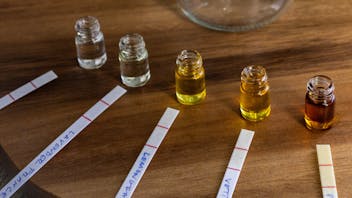Product Overview
Our organic Citronella from India is distilled from a perennial grass, Cymbopogon winterianus – also known as the Java type – that is considered superior for use in perfumery because of its fresh, sweet, lemony aroma.[1] Cymbopogon nardus (known as the Ceylon type) is commonly used for aromatherapy applications for which it is well suited. This differentiation is due to the variance in their chemical compositions, mainly in their geraniol content (higher percent in the Ceylon type) and citronellal content (higher percent in the Java type)[2], and also accounts for the difference in their aromas.[3]
In the 19th century, a man named Winter (supposedly an important distiller in Ceylon) recognized the taxonomic differences between several varieties of Cymbopogon nardus and raised a separate population of the variety 'Maha Pengiri' now called C. winterianus. Upon its extensive cultivation for oil in Indonesia, it acquired the commercial name, Java Citronella.
Some of you may have memories of warm evenings in late summer – including mosquitoes and ubiquitous Citronella candles or torches. Unfortunately, that smell memory is most likely influenced by inexpensive and widely available isolates and aroma chemicals used in such products. The fragrance of real Citronella essential oil builds on the crispness of aldehydes with notes of limonene, rosy alcohols and fruity esters – truly an oil worth revisiting.
1 Rose, Jeanne. 375 Essential Oils and Hydrosols, 1999, p. 97.
2 Fischer-Rizzi, Suzanne. Complete Aromatherapy Handbook , 1990, p. 151.
3 Rhind, William. A History of the Vegetable Kingdom, 1868, p. 560.



